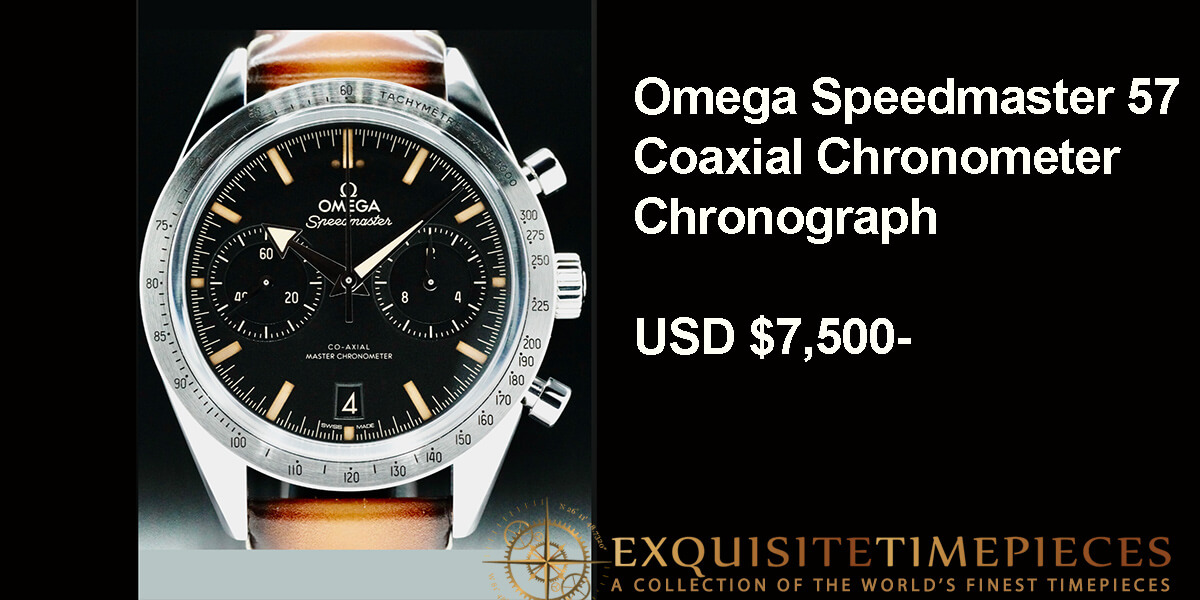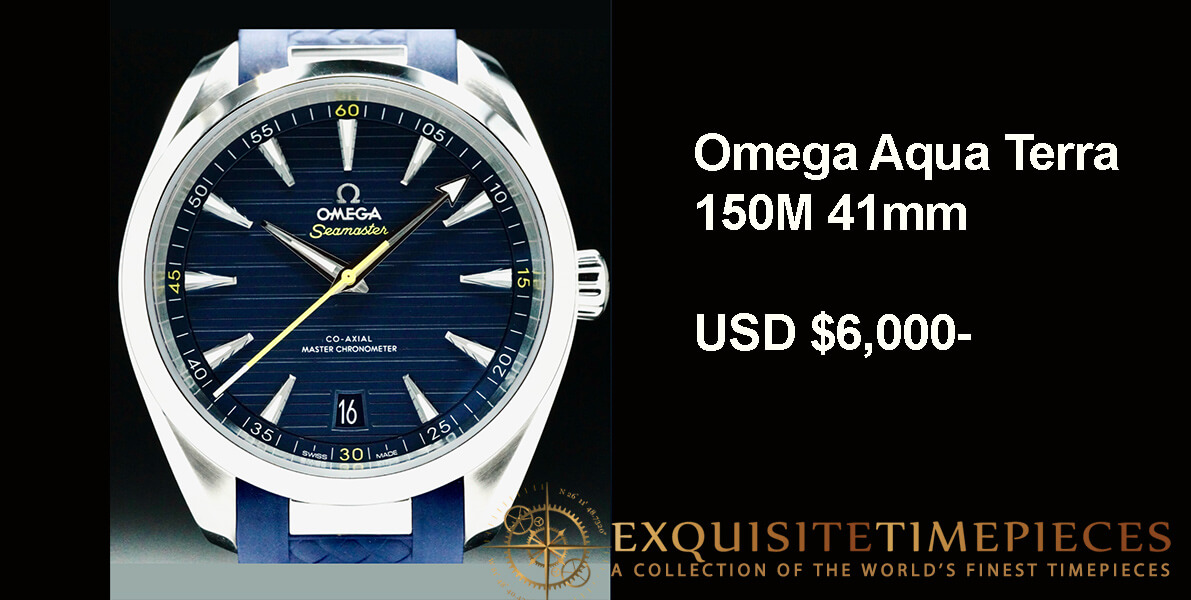Angelus U41 Orange: a (relatively) Affordable (for a tourbillon) Tourbillon Sports Watch
by Tim Mosso
Americans and Europeans will never agree on the virtues of nobility. No, not the quality of being gallant, upstanding, and admirable; the kind of nobility that comes by birth.
Americans celebrate achieving elite status in a single generation, while Europeans often prefer to tie pedigree to a generational inheritance.
Having potentially slandered an entire continent, at least I have your attention! The Angelus U41 sports tourbillon shall serve as exhibit “A” while I make my case.

Angelus U41 Orange
Media-friendly millennial German nobleman and race car driver Albert von Thurn und Taxis traces his family billions back to a sixteenth-century Holy Roman Empire tax collector. He’d probably approve of the Angelus brand website’s “History” page, which opens with events occurring in 1891.
That’s curious in the same sense that Blancpain’s repetition of “1735” is comical and Graham’s quotation of “1695” is farcical. The story of the modern Angelus firm begins in the 1990s with a company called Les Monts — “The British Masters” after 2000 — which owned the Tompion, Graham, and Arnold & Son brands.
One of its primary manufacturing partners, Jaquet SA, was a specialist in finishing ébauches and building a variety of Valjoux-based hardware.
Jaquet — and its founder, Jean-Pierre Jaquet — ultimately became the greatest true crime story the watch industry ever produced.
For more on Jaquet, the man, see my YouTube rundown of an affair that involved stolen gold, counterfeit Rolex, and shots fired. But Jaquet, the company, changed its name to La Joux-Perret in 2003 and continued under new ownership.
La Joux-Perret acquired Arnold & Son in 2010, collected the rights to twentieth-century chronograph specialist Angelus in 2011, was sold as a package to Japan’s Citizen in 2012, and revived Angelus as a brand in 2015.
————————————————————————————————————–
—————————————————————————————————–
Clearly, the current iteration of Angelus is more of a bootstrapping upstart than a landed member of the Third Estate, but this newcomer is a highly cultivated arriviste.
The modern iteration of Angelus was the brainchild and pet project of longtime (now left) La Joux-Perret and Arnold & Son watchmaker and movement development chief Sébastien Chaulmontet.
While Chaulmontet expressed his adoration for vintage Angelus chronographs at the time of the brand’s 2015 Baselworld revival, Chaulmontet’s direction ultimately centered the new marque around tourbillon watches.
Although Chaulmontet departed for a new role at Sellita in 2017, the direction he set determined the course of the revival brand for most of its first decade, and tourbillon regulators dominated the yearly offerings until recently.

Angelus U41 Orange on the wrist
2020 brought this feature’s subject watch, the U41 Orange. While its naming convention suggests something that might have torched a Liberty ship in the early 1940s, the esthetic is more Richard Mille than Das Boot.
At a launch price of $34,100, the idea behind this aggressive sports tourbillon is that of a (relative) value proposition in the active lifestyle tourbillon class; this is no frontal assault on RM’s convoy. But the notion of a tourbillon that can be enjoyed without care is compelling, and Angelus leans into it.

Angelus U41 Orange on the wrist
At 42mm in grade five titanium, the U41 is a breeze to wear even on the author’s girlish 16cm wrist. At a measured 10.2mm thick, this wafer of gossamer grace is almost toy-like, and that impression compounds with the supple color-matched rubber strap.
The lug-ends of the band are contoured to the case, but this strap is soft enough that it wraps easily around the tight bend of a skinny forearm.

Buckle and strap of the Angelus U41 Orange
Angelus dispenses with a bulky deployment clasp in favor of a pin buckle. While likely a cost-carving choice to keep the MSRP appealing, the ardillon does allow adjustment with a casual ease that’s in character with the watch.

Angelus U41 Orange caseband and crown
Angelus leads with color and complex case details. The case combines polish, brushed satin, and particularly intricate hollow lugs fixed to the caseband by screws. This treatment is intended to make the watch look finely detailed and cool, and it mostly succeeds on those terms.
The notched bezel is spare and attractive while providing a suitable frame for the dial’s splash of color and time scales.
In all candor, there’s no seed of iconic status or transcendent beauty in this shape, but it’s bright, attractive, and in character for the genre.
—————————————————————————————————–
—————————————————————————————————–
But the star of the show is Angelus caliber A-300. Its sprawling anthracite expanse is one and the same as the dial itself. Like ambitious new money, this U41 knows that making a grand entrance can steal the room from a crowd of stuffy Bilderbergers.

An open barrel bares its mainspring coil for dramatic effect; with familiarity, it becomes a sort of informal power reserve indicator for the 60-hour autonomy. A series of cut, hollowed, and peripherally anchored bridges conducts the satin silver drivetrain on its way to 4 Hz glory.

Flying tourbillon of the Angelus U41 Orange
Naturally, the flying tourbillon is the star of the U41. Angelus specifically raised its usually low-beat tourbillon architecture to 28,800 vibrations per hour; this better sustains precise timekeeping during vigorous activity. The 60-second tourbillon also boasts some of the finest finish to be found on the caliber.
Bright polish, hand bevels, satin contrast, and handsomely chamfered screws reflect money and time invested to make the most prominent part of the watch look suitably expensive.
Angelus further states that unspecified reinforcement was applied to brace the movement against shock.

Movement detail of the Angelus U41 Orange
If there’s any uncultured blowback to the A-300’s grand arrival, it’s the knowledge that this movement, train, and recognizable tourbillon components are available to La Joux-Perret’s paying customers. Some of these outfits — hi, Zelos! — sell their watches for far less than the U41’s $34 grand.
That, and the vintage Angelus logo seems profoundly at odds with the techno-industrial modernity of the dial. It’s like a trust fund kid looking for the exit amid a crowd of overnight Bitcoin millionaires.

Angelus U41 Orange
The remainder of the movement-cum-dial is a mixed bag of finish. There’s plenty of brushed surfacing on the bridges, but it’s applied in a fashion consistent with mechanized process. The bridge bevels and jewel sinks are evenly and cleanly applied, but once again, milling machines led the way.
Barrel, ratchet wheel, and train wheels are handsomely brushed in silver satin for an agreeable contrast with the black bridges, but there is no further detail present. A motion works bridge mounting the drive for the hands can be beguiling to observe in action, but it’s no finer than its surroundings.

Keyless works of the Angelus U41 Orange
To its credit, the keyless works and its clutch assembly are as appealing as the details of the tourbillon, and it’s one of the few spots where Angelus or its corporate overlords clearly slowed down for the sake of making an impression.
These minuscule steel components boast satin tops, media-blasted recesses, and micro-bevels with actual mirrored rounding. Not all the bevels are perfect, but they are leagues more appealing than the robot work seen elsewhere. It works well, too; this watch is a pleasure to wind and set.
—————————————————————————————————–
—————————————————————————————————–
As a sports watch, the U41 falls on only two counts: water resistance and lume. The first is limited to 30 meters, so this is a high-and-dry active lifestyle accessory. That said, a surprising number of frighteningly expensive F.P. Journe and Richard Mille sports watches have push-down crowns and 30–50-meter water ratings, so Angelus is still in the hunt.
And the luminescence is limited to the two hands, so be prepared to guess somewhat at your dimly lit crypto-influencer after-after-parties.

Display back of the Angelus U41 Orange
Casebacks on skeleton watches are less of a decision factor than on most luxury timepieces, but this brand’s lack of a track record breeds curiosity — and scrutiny.
Aside from a somewhat better view of the drivetrain, the caseback highlight from a watch snob perspective will be the click assembly. Its steel spring is large, graceful, and finished to the same standards at the clutch/detent assembly on the dial side.
Additional points are awarded for the mirrored concave surrounding the ratchet wheel’s fixing screw. And the sunburst grain of the crown wheel core is striking.
That said, most of what’s present on the caseback is a qualitative parallel to the likes of IWC, Zenith, Jaeger-LeCoultre, or perhaps mainstream models from Glashütte Original. After all, something has to give when you’re selling a 25-unit limited edition tourbillon for under $100 grand.

Angelus U41 Orange
Of interest to movement snobs is the five-position adjustment advertised on what amounts to a base plate.
While Angelus makes no specific claims about accuracy, timing in five orientations is standard in most reputable chronometer tests and often appears on haute horlogerie watches with legitimate centuries of heritage. Out of curiosity, the watch was placed on a timing machine in six positions for a few minutes, and it hewed to the COSC’s -4/+6 second per projected 24 hours.
And if that’s not enough, be aware that modern Angelus watches are rare. Arnold & Son, La Joux-Perret’s larger nameplate, builds between 700 and 1,000 watches per year. Angelus’ volume typically amounts to ten percent of that. The 25-piece U41 Orange and its 25-piece U41 Blue stablemate likely were spaced over several model years.
Watch collectors who demand an immaculately finished sports tourbillon from an ancient brand can pay their six-figures for an Audemars Piguet Royal Oak Concept. Or get AP Renaud et Papi to build one for Richard Mille and then pay up to seven-figures for the privilege. Angelus — as it exists today — doesn’t have AP’s ancient establishment credentials, but then, neither does Richard Mille.

Angelus U41 Orange
The Angelus U41 is an attractively priced point of entry into a class of watch rarely seen outside the ranks of generational fortunes and hereditary privilege. It’s a successful upstart with nothing to offer but its tangible qualities in the here-and-now.
Perhaps even Albert von Thurn und Taxis would be impressed.
For more information, please visit https://angelus-watches.com/collections/urban-collection/u40-orange-skeleton-tourbillon
Quick Facts: Angelus U41 Orange
Reference: 0TSBT.O01A.K07OT
Functions: hours, minutes, seconds; power reserve indicator, flying tourbillon
Case: 42mm x 10.2mm x 50.4mm in grade five titanium; 30-meter water resistance
Movement: manual-wind caliber A-300 with one-minute flying tourbillon, 60-hour power reserve, 4Hz/28,800 vph, five-position adjustment, 23 jewels
Production years (all variants): 2020-onwards; 25 in orange; 25 in blue
Price $34,400
Tim Mosso is the media director and watch specialist at The 1916 Company. You can check out their very comprehensive YouTube channel at www.youtube.com/@the1916company.
* This article was first published at Angelus U41 Orange: a (relatively) Affordable (for a Tourbillon) Tourbillon Sports Watch
You might also enjoy:
Historic Swiss Brand Angelus Is Back And Presents The U10 Tourbillon Lumière
It’s Not What You Think: Angelus U20 Ultra-Skeleton Tourbillon
Angelus U40 Racing Tourbillon Skeleton: High-Performance Perfection
The Enticing Qualities Of “Entry-Level” Tourbillons









Leave a Reply
Want to join the discussion?Feel free to contribute!